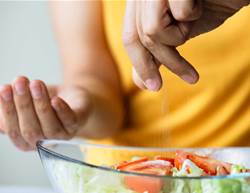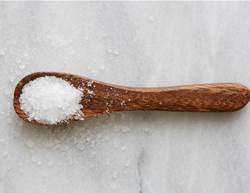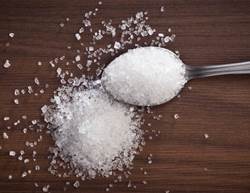A new study released for World Salt Awareness Week shows that while many countries are taking action to drop their salt intake, Australia is falling behind.
Australians are still eating almost double the recommended maximum of 5g - or a teaspoon - of salt per day. Bread, cheese and processed meat are three of the biggest contributors.
Study author Dr Kathy Trieu, from The George Institute for Global Health, said the lack of progress in Australia is disappointing given that eating less salt is one of the most cost-effective ways of preventing early deaths from diseases linked to high blood pressure.
“While the Government have set some voluntary food reformulation targets, they should be more ambitious and made mandatory to make a real difference," she said. "The food industry also has a role to play in making products that have less salt in them.
“With more than six million Australian adults – or one in three people - having high blood pressure, reducing salt consumption would save thousands of lives each year as well as millions in healthcare costs.”
Globally, high blood pressure accounts for just over 10 million deaths and eating too much salt - a leading cause of high blood pressure - is responsible for almost two million deaths.
To reduce premature deaths from non-communicable diseases by a quarter by 2025, the World Health Organization (WHO) recommended reducing population salt intake by 30% in 2013.
At the mid-point for this target in 2019, George Institute researchers looked at all national salt reduction initiatives around the world to determine countries’ progress in achieving the target.
“While we found more countries were taking action on salt, only a small proportion reported decreases in actual salt intakes and no countries have yet met the WHO target,” said Kathy.
Overall the number of national salt reduction initiatives - like food reformulation, front-of-pack labelling, nutrition guidelines in public institutions and salt taxes - was up by almost a third compared to 2014. Twelve countries saw an average decrease in salt intake of at least 1g per day or more - but not Australia.
“While we’ve had food reformulation targets, front of pack labelling and national nutrition guidelines for schools in place for some time, these measures all remain voluntary and are clearly not having an impact on actual salt intakes,” said Kathy.
And with packaged or processed foods making up three quarters of the daily salt intake in high-income countries like Australia, and more people now eating these foods in lower income countries, a stronger focus on this area is warranted.
“We need three key changes - governments need to set more comprehensive and mandatory targets, industry needs to commit to adhering to product reformulation and consumers need to be empowered to switch from processed to fresh foods,” said Kathy.
“And the report card for Australia reads ‘must try harder’,” she added.
Heart Foundation urges Australians to "shake it off"
The Heart Foundation has surveyed more than 1000 Australian adults and found two in five (40%) agreed salt is OK to flavour foods in heart-healthy eating, with a further 29% who were uncertain.
Worryingly, just two in five people (41%) were aware that poor diet increases their risks for heart disease, with males and people aged 45 or over, less likely to be aware of this risk (both 39%).
Heart Foundation dietitian Sian Armstrong said it was concerning that people believed salt was ok in heart-healthy eating. She warned that regularly consuming too much salt can lead to high blood pressure.
“High blood pressure is known as a silent killer because there are no obvious signs or symptoms that you have it, but it can put you at higher risk of a heart attack or stroke. As people get older, it can increase over time,” Armstrong said.
"The good news is high blood pressure can be controlled by following a heart-healthy eating pattern that is naturally low in salt, added sugars, saturated and trans fat, together with other lifestyle changes and, if advised by your doctor, taking medication.”
The best way to manage how much salt you eat is cooking fresh, heart-healthy meals with a colourful mix of vegetables, fruits and healthy wholegrains like brown rice or wholemeal couscous. Throw in some proteins that are good for your heart like fish, seafood, beans or lentils, use healthy fats and cut back on foods with hidden salt like chips, muffins or cakes.
“You don’t need to add salt to pack a flavour punch in healthy meals, as cooking with fresh or dried herbs, spices, citrus, garlic or black pepper adds a tasty tang to any dish.
“Our tastebuds do adjust over time to less salt in foods. And creating your own pasta sauces or salad dressings rather than using store-bought versions packed with salt is not only satisfying but also helps to reduce your salt intake.









